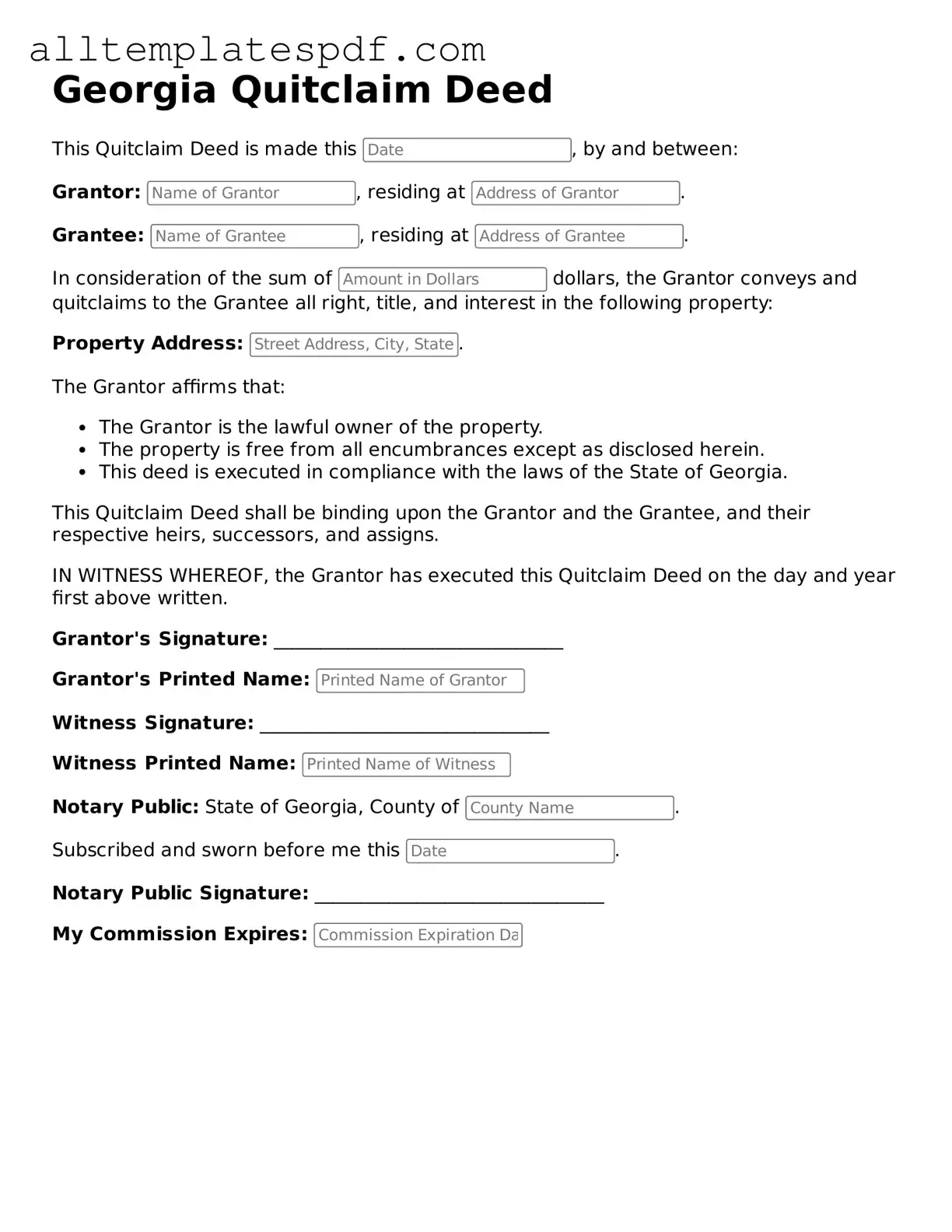Filling out a Georgia Quitclaim Deed form can seem straightforward, but several common mistakes can lead to complications. One frequent error is not including all required parties. The grantor, or the person transferring the property, must be clearly identified. If there are multiple owners, all must sign the deed. Omitting a co-owner can create legal challenges later.
Another mistake is failing to provide a complete and accurate legal description of the property. The description must detail the exact location and boundaries of the property being transferred. A vague or incorrect description can result in disputes over ownership. It's essential to refer to the property's existing deed or consult local records to ensure accuracy.
Many individuals overlook the importance of notarization. A Quitclaim Deed must be signed in the presence of a notary public to be legally binding. Without proper notarization, the deed may not be recognized by the county clerk’s office. This step is crucial for ensuring that the transfer is valid and enforceable.
Additionally, people often neglect to record the deed with the county. While the Quitclaim Deed becomes effective upon signing, recording it protects the new owner's rights against future claims. Failing to record the deed can lead to issues if the previous owner tries to sell the property again or if a creditor makes a claim.
Finally, some individuals forget to check for outstanding liens or encumbrances on the property. A Quitclaim Deed transfers ownership but does not clear any debts associated with the property. Buyers should conduct a title search to ensure they are aware of any existing obligations. Ignoring this step can result in unexpected financial burdens after the transfer.
